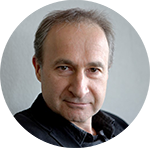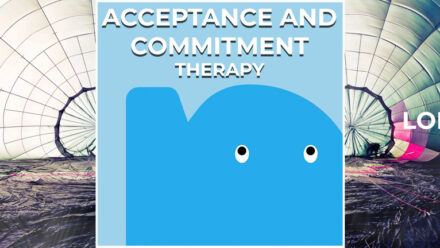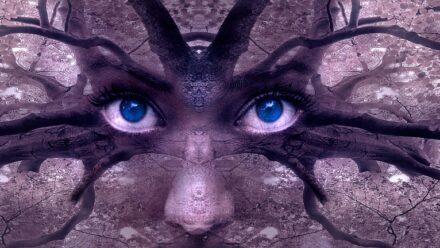
The feeling of being stuck in a pattern of psychological suffering: It s*cks, right?
Many people who battle psychological suffering – like anxiety, obsessive compulsion, sadness, suicidal thoughts, hearing voices, or addiction – experience a deep feeling of being stuck. It seems like these thoughts and feelings take up the entire mental space. Because of this, external influences and a change in emotions hardly have any effect. Why is it so hard to break out of these mental patterns?
The dynamics between bottom-up and top-down approaches
A possible explanation lies in the way that our brain processes information and creates consciousness. Our brain constructs an image of reality through a constant interaction between:
Bottom-up approaches: Information we gain through our senses
Top-down approaches: Our expectations, memories, and previous experiences that interpret this information.
Usually, this interaction leads to an accurate and flexible representation of the world around us, in which our emotions give us direction; positive feelings pull us towards something, whilst negative feelings push us away from it.
The role of the default mode network
In psychological suffering, the balance between the two seems to be disrupted. The Default Mode Network (DMN) – a network of different areas of the brain that is active during rest and self-reflection – plays a crucial part in this. This network plays a part in constructing our self-image and predicting what’s going to happen in the outside world.
When the DMN becomes overactive, the top-down approaches seem to get the upper hand. Negative thoughts and feelings can sustain themselves and keep going around in a vicious cycle. This could explain why someone has the feeling they’re stuck, and why external stimuli or changes seem to hardly have any effect.
Restoration of balance: new perspectives for treatment
Insight in this dynamic opens the door to treatments that focus on restoring the balance between top-down and bottom-up approaches. The goal is to break the dominance of rigid, internal patterns and make the spirit more receptive to external experiences and a shift in our emotions.
Several approaches can help achieve this, for example:
Meditation and mindfulness: These practices encourage the awareness of being in the moment. They can help break negative, automatic thinking patterns.
Body-oriented therapies: By paying attention to physical sensations and tensions, it’s easier to connect with the here and now. This can lead to us getting out of our heads and shifting the focus from internal thoughts to external experiences.
Experiential methods: Techniques like holotropic breathing and hypnosis can bring about deep and transforming experiences. These contribute to breaking through mental patters that are stuck in our psyche.
Physical activity: Exercising regularly, like running, doesn’t only improve our mood, but can also help to reduce mental rigidity and make our spirit a bit more flexible.
Psychedelic therapies: Research shows that psychedelia like psylocybin can reduce the activity within the DMN. This leads to a temporary ‘reset’ of the brain and creates space for new perspectives and behaviours.
The feeling of being stuck: Conclusion
The feeling of being stuck in psychological suffering can be interpreted as a disruption between the bottom-up and top-down approaches, in which the default mode network plays a key part. Treatment methods that focus on reducing the dominance of the rigid, internal patterns and enhance the influence of external experiences, offer very promising perspectives for recovery and growth.





Comments: